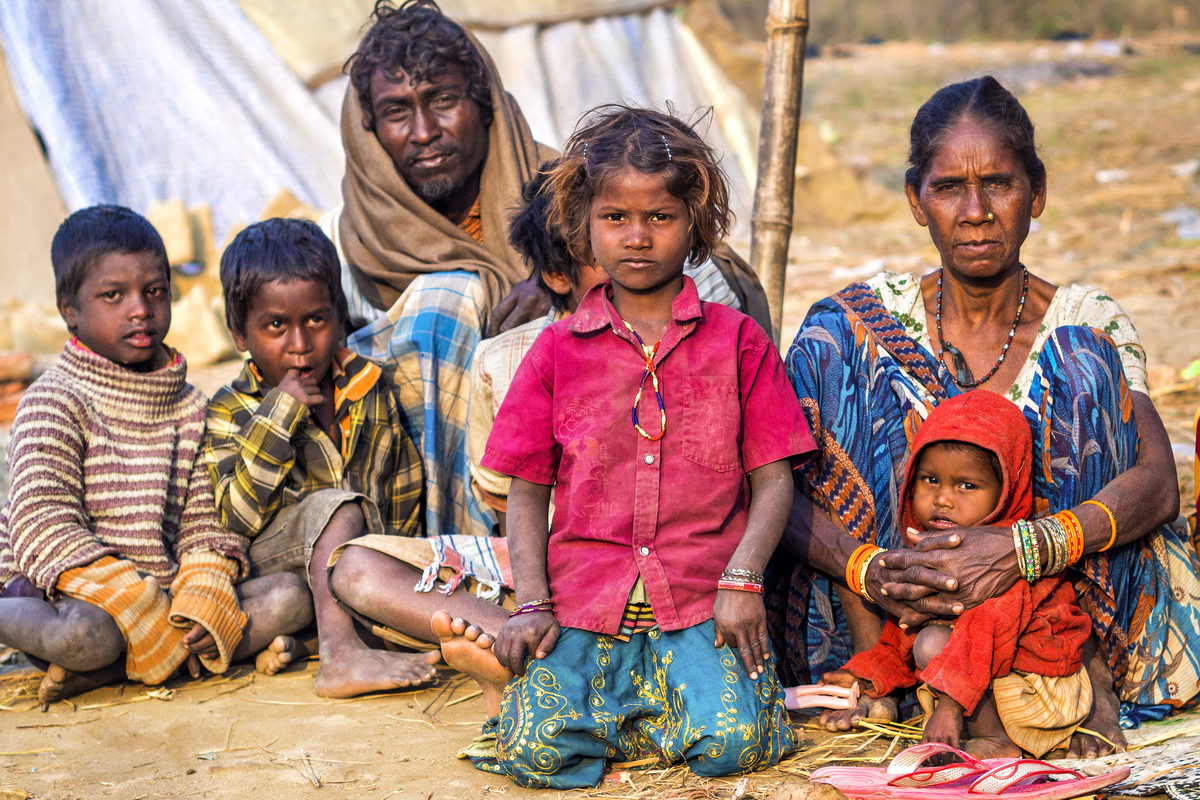Malnutrition has an irreversible effect on health and human development. The initial 1,000 days of one’s lifespan, from the day of conception till he/she turns two years of age, are considered as a critical ‘window of opportunity’ when poor nutrition can result in stunted growth, diminished immune response, impaired intellectual ability, poor school performance and lower economic productivity.
Globally, WHO’s three key anthropometric measures ~ stunting (a lower-than-expected height-for-age), wasting (lowerthan-expected weight-for-height) and underweight (lower-thanexpected weight-for-age) ~ are used to measure child malnutrition. Such measurements are widely accepted for assessing the status of malnutrition.
Generally, children who have been severely malnourished in early childhood suffer a later reduction in IQ by as many as 15 points, significantly affecting schooling achievement and increasing the risk of drop-out or repeat grades. Moreover, the impact of malnutrition on future life chances starts before birth.
In 1995, the British Medical Journal coined the term ‘Barker Hypothesis’ to refer to Dr. David Barker’s theory that conditions in utero have a long impact on a child’s life chances. There is considerable support for the Barker Hypothesis. Growth stunting is regarded as chronic malnutrition caused by an extremely low energy intake or nutrient losses due to infection. It is also a risk factor for increased mortality, poor cognitive and motor development, and other impairments in function.
Moreover, stunting usually persists, leading to smaller size and poorer performance in adulthood. Wasting is characterized by a rapid deterioration in nutritional status over a short period of time in children under five. It is sometime referred to as ‘acute malnutrition’ because it is believed that episodes of wasting have a short duration. The correlation between Low birth weight (LBW) or early childhood stunting and later cardiovascular disease (CVD) and diabetes may arise from the fact that nutritional deprivation in utero or in early childhood programmes a newborn for a life of scarcity.
The problems arise when the child’s system is later confronted by a world of plenty. Malnutrition in children has risen across in India in recent years, sharply reversing hard-won gains, according to the latest government data. The first round of the National Family Health Survey-5 (NFHS-5) was conducted in 22 states and Union Territories (UTs) before the onset of the pandemic. When compared with the last survey ~ NFHS-4 of 2015-16 ~ more states now fare poorly on several parameters of malnutrition.
This means children born between 2014 and 2019 are more malnourished than the previous generation. Analysis of survey data shows a rise in stunting among children of 13 states. The list includes populous states like Maharashtra, West Bengal, Gujarat and Kerala. Meghalaya (46.6 per cent) had the highest prevalence of stunting followed by Bihar (42.9 per cent). At 22.3 per cent, Sikkim has the lowest prevalence of stunting. Ladakh and Andhra Pradesh have made least progress in addressing the problem.
Surprisingly, affluent states like Goa (25.8 per cent) and Kerala (23.4 per cent) have reported a rise in stunting. These two states were in the list of best performing states in NFHS-4. As many as 13 states/UTs have also reported rising incidence of wasting among children. For most, the increase has been in the range of 0.1 to 8.2 percentage points. The levels remain unchanged in Maharashtra and West Bengal since NFHS-4.
Karnataka is the only state that has made progress by reducing the prevalence of wasting by 6.6 percentage points. In case of underweight, a rise is noticed among children under five in 16 states and UTs. States that have managed to tackle the problem show only a marginal decline ~ from the lowest 0.5 percentage by Manipur to the highest 2.9 by Bihar. Apart from the status of malnutrition, the survey report also has data related to neonatal (28 days from birth), infant (up to one year) and child (under-five) mortality. It shows infant and child mortality has declined across most states.
Sikkim, J&K, Goa and Assam have witnessed a steep reduction in neonatal mortality rate (NMR) and under-five mortality rate (U5MR). Rural children have been found to be more vulnerable than their urban counterparts in a majority of states. The link between nutrition and economics has been analyzed by economists since a long time.
The notion that poverty causes malnutrition dates back at least to Adam Smith and income is still the main explanatory variable in most contemporary attempts to explain poor nutrition. The International Food Policy Research Institute estimates that because of the Covid-19 pandemic an additional 140 million people will be thrown into living in extreme poverty (income less than US$1.90 per day) in 2020 globally.
According to the World Food Programme, the number of people in Low and Medium income countries (LMCs) facing acute food insecurity will also double to 250 million by the end of 2020. The disruption of health and social protection services during lockdowns, nutrition interventions, mainly mid-day meal or hot cooked meals at anganwadi centres, other supplementary nutrition programme under ICDS will further compromise maternal and child health and mortality.
Taking all these eventualities under consideration together with the status as revealed in the NFHS-4 vis-à-vis NFHS-5 survey, the nutritional insecurity of children in India can be evaluated. The latest National Family Health Survey (NFHS) of 2015-16 reveals that every second child in India is already malnourished. It means that roughly 77 million children ~ the combined population of Jharkhand, Telangana and Kerala ~ are undernourished.
Using this data, researchers have ascertained the additional children population that will become malnourished in three distinct weight-loss scenarios: (1) If children lose as little as 0.5 per cent of their body weight, prevalence of underweight, severe underweight, wasting and severe wasting status will increase by additional 0.4 million, 0.3 million, 0.4 million and 0.2 million children respectively; (2) In case, children lose 2.5 per cent of their body weight, prevalence of underweight, severe underweight, wasting and severe wasting status will increase by additional 2.2 million, 1.4 million, 2.4 million and 0.9 million children respectively; (3) In the scenario of 5 per cent weight loss, India will experience a staggering increase of underweight, severe underweight, wasting and severe wasting status increased by additional 4.4 million, 3.2 million, 5.1 million and 2.1 million children respectively.
As many as 15 million additional children would be pushed into malnutrition if children in the poorest fifth of population lose 5 per cent of their body weight. Now, what will be the impact on our future generation (in utero) and born during pandemic period? Before attempting an answer to the query let us look back at fallouts of past pandemics or similar crises. Scientists and researchers have found that children born during the 1918 pandemic (or in utero) grew up less educated and were poor as well.
Similarly, expectant mothers during the 2008 economic recession gave birth to underweight infants, particularly those from poor households. In 1918, El Nino caused devastating floods in Ecuador. Children born during that period were underweight and stunting continued for five to seven years. The impact and estimates stated here are likely to be conservative, as the duration of the pandemic crisis is unknown, and its full impacts on food, health, education and social-protection systems are yet to be realized.
The impact of the pandemic on the generation born during this period, including children who are under five years of age, is very important as these children will account for around 46 per cent of India’s workforce by 2040. Preliminary indicators suggest that the pandemic generation of this century would not be any different from those who survived past ones. However, the World Bank has prepared an Index known as Human Capital Index (HCl) which measures how much capital each country loses through lack of education and health.
Alternatively, it measures ‘the human capital that a child born today can expect to attain by her 18th birthday.’ This includes the health and education entitlements of new born now and how it would impact his/her future productivity. The latest Human Capital Index (HCl) released by the World Bank says that the pandemic generation would be one of the worst victims. The adult generation of 2040 would be a stunted one; they would be left behind in terms of human capital.
Moreover, there would be higher child mortality and also stunting among them who manage to survive. According to HCl estimates, child mortality will increase by 45 per cent in 118 LMICs. Analysis shows that a 10 per cent increase in GDP per capita reduces infant mortality by 4.5 per cent. But most countries are going to experience high GDP loss due to the current pandemic.
The new index brings out the fact that even though the pandemic is a temporary shock, it will leave crippling impacts on tomorrow’s children. Task before us is to assess the status of nutrition on a war footing and to take all steps to contain malnutrition of the pandemic generation. In the words of Ban Ki-moon, the former secretaryGeneral of the United Nations: “Nutrition is both a maker and a marker of development.
Improper nutrition is the platform for progress in health, education, employment, empowerment of women and the reduction of poverty and inequality and can lay the foundation for peaceful, secure and stable societies.”
(The writer is a retired IAS officer)












